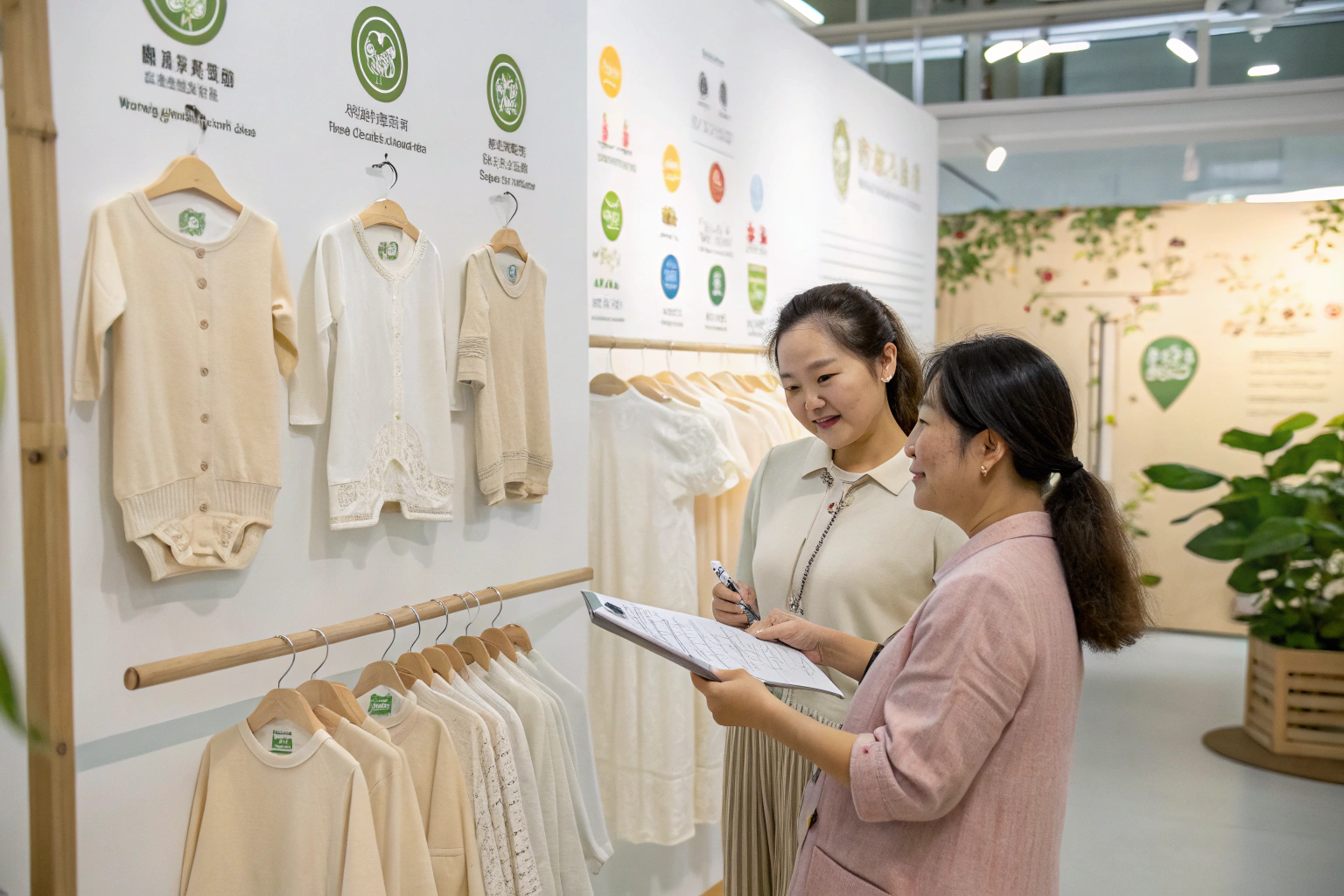From sourcing headaches to skin allergies, many parents and retailers struggle to find the right newborn clothing options. If you’re a brand owner targeting the premium babywear market, you know just how important organic fabrics, safe dyes, and reliable delivery are. Yet many suppliers don’t meet international standards or ship on time.
The best options for organic newborn clothes are those made from GOTS-certified cotton, bamboo blends, or low-impact dyed fabrics manufactured under ethical and safety-compliant conditions.
If you’re sourcing from China, Vietnam, or India, understanding what fabric choices, certifications, and manufacturer standards matter is the first step. In this article, I’ll walk you through what buyers like Ron—our typical US-based sourcing expert—need to know to profit sustainably and reliably in this growing sector.
What fabrics are best for organic newborn clothing?
Choosing the right organic fabric means balancing softness, breathability, and chemical safety. For newborns, nothing matters more than what directly touches their skin. As a manufacturer with years of experience in textile production, I’ve handled nearly every fiber on the market.
GOTS-certified cotton, organic bamboo, and unbleached muslin stand out as the top organic fabrics for newborn garments. These options offer the right mix of skin-friendliness, sustainability, and compliance.
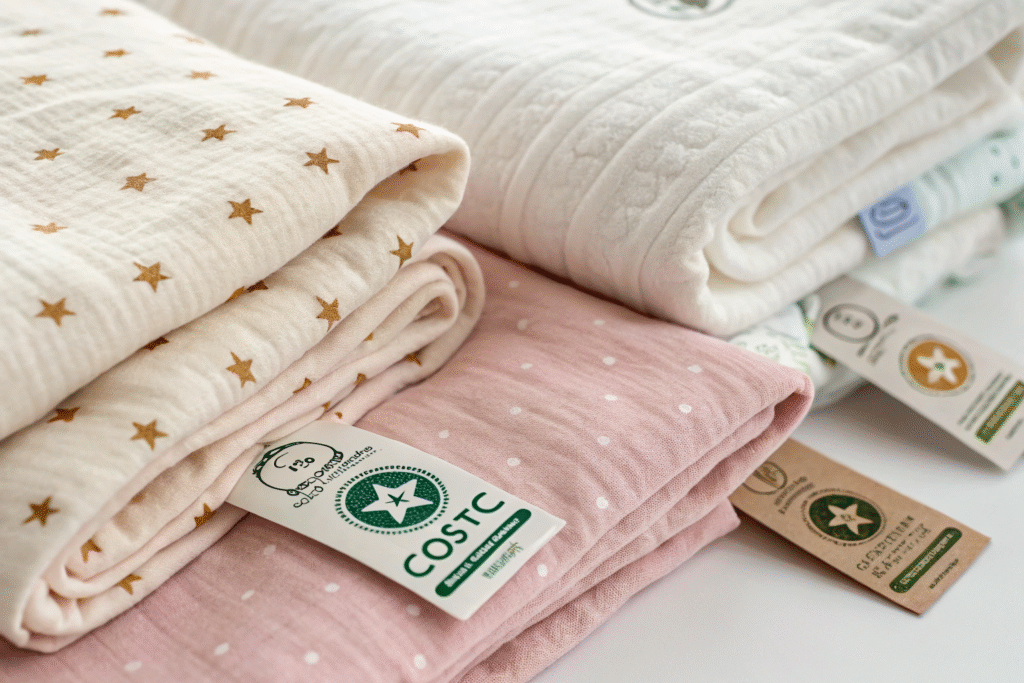
Why is GOTS-Certified Cotton a top choice?
The Global Organic Textile Standard (GOTS) is widely recognized across Europe and the U.S. for verifying that cotton is grown without harmful chemicals and processed under strict ecological and labor conditions. Fabrics carrying this certification are trusted by large brands and retailers globally.
We ensure that all our GOTS-certified suppliers provide yarns that are soft enough for delicate infant skin while meeting strict testing protocols. Beyond comfort, GOTS assures buyers of long-term credibility in eco-marketing. You can also refer to OEKO-TEX as a complementary standard for chemical safety testing.
What makes bamboo a strong alternative?
Bamboo-derived fabrics are naturally hypoallergenic and moisture-wicking, making them ideal for hot climates or layered winter babywear. While not all bamboo fabrics are created equal, we use closed-loop processing bamboo viscose to minimize environmental harm.
Retailers often highlight bamboo’s antibacterial properties as a sales point. However, it’s vital to verify certifications like OEKO-TEX 100 or TENCEL labels if claiming eco or health benefits on product packaging.
How can you verify if a babywear fabric is truly organic?
Even if a supplier claims their fabric is organic, proof is everything. Many buyers have been burned by vague paperwork or “greenwashing” language. That’s why knowing how to verify is key to avoiding trouble.
Check for valid third-party certifications like GOTS, OEKO-TEX, and USDA Organic, and request batch-level certificates from your supplier.
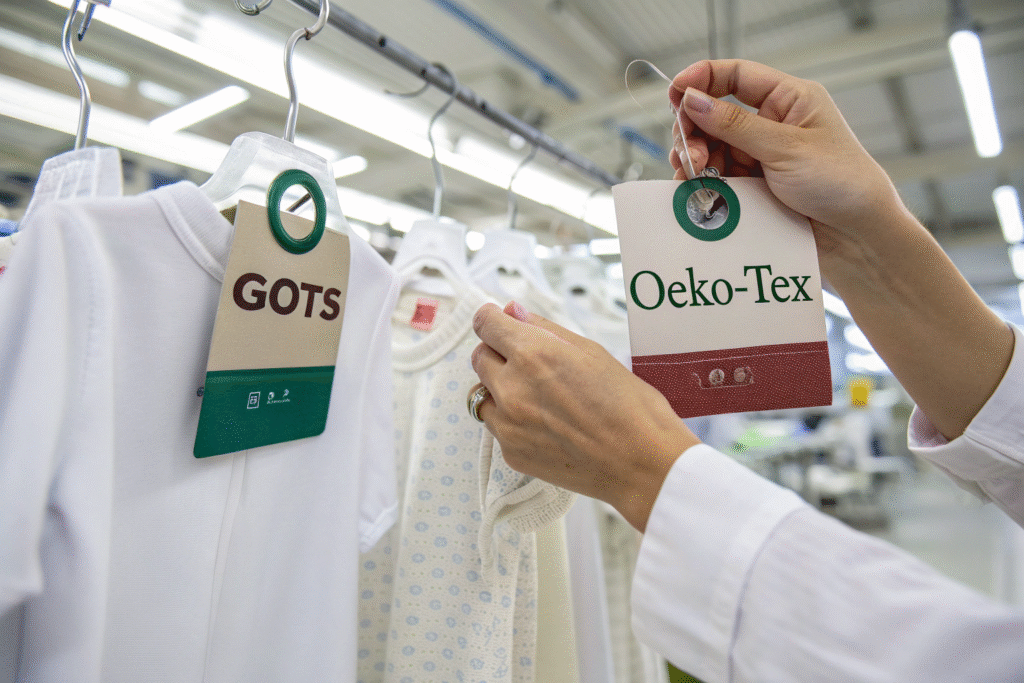
How do I verify GOTS claims from suppliers?
First, confirm that the supplier is listed on the GOTS Public Database. If not, they’re likely not certified or are buying uncertified materials themselves. We always share our own certification chain with new buyers during onboarding.
In our case, every lot of GOTS cotton is matched with a transaction certificate (TC). This document confirms that the yarn and the finished garment are traceable. For additional protection, use services like Control Union for external inspection.
What documentation is required at customs?
Customs in the US or EU often check the import declaration documents, especially for babywear making eco claims. You may need to provide supporting documentation such as the CPSIA certificate or REACH compliance evidence.
We prepare these proactively for our clients, especially those distributing to big-box retailers who request retailer-specific audit forms.
Which baby clothing styles are most popular in organic lines?
Choosing the right styles goes beyond fashion. In the organic segment, comfort, functionality, and ease of wear are top priorities. American and European parents increasingly look for simple, neutral pieces that feel soft and hold up well after washing.
The most popular styles for organic newborn clothing include envelope neck bodysuits, kimono wrap tops, and elastic-waist pants in breathable natural shades.
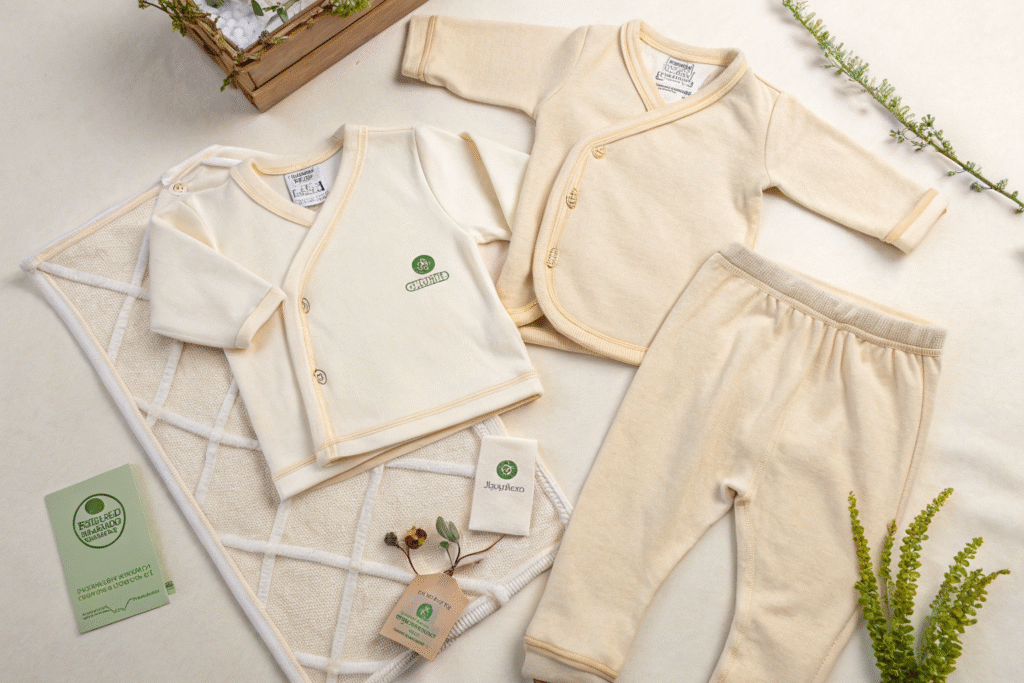
What are the top-selling essentials for newborns?
Across our production orders, the consistent bestsellers are:
| Style | Description | Fabric |
|---|---|---|
| Bodysuits | Envelope necks, nickel-free snaps | GOTS cotton |
| Kimono Tops | Side tie, easy diaper access | Muslin |
| Rompers | One-piece with snap closures | Bamboo blend |
| Leggings | Soft waistband, unisex | Organic jersey |
| Sleep Sacks | No zippers, safe design | Cotton flannel |
Buyers can bundle these styles into eco gift sets or seasonal collections. Simplicity often wins over complicated designs when targeting premium parents.
Are prints and dyes safe for organic babywear?
Dyes must meet strict chemical safety standards to qualify as “organic-friendly.” We use low-impact fiber-reactive dyes and natural plant-based options when requested.
Clients should avoid suppliers who can’t provide a MSDS (Material Safety Data Sheet) for their dye chemicals. Water-based prints with safe pigments are ideal, and we guide clients through color matching during sampling.
What should buyers look for in a newborn clothing supplier?
The supplier you choose can make or break your launch timeline. Whether you’re restocking a viral newborn collection or building your first line, responsiveness and transparency are essential. Many first-time importers underestimate the impact of shipping issues or delayed approvals.
Look for suppliers who offer in-house quality checks, responsive English-speaking reps, and verifiable certifications—plus flexible order quantities.
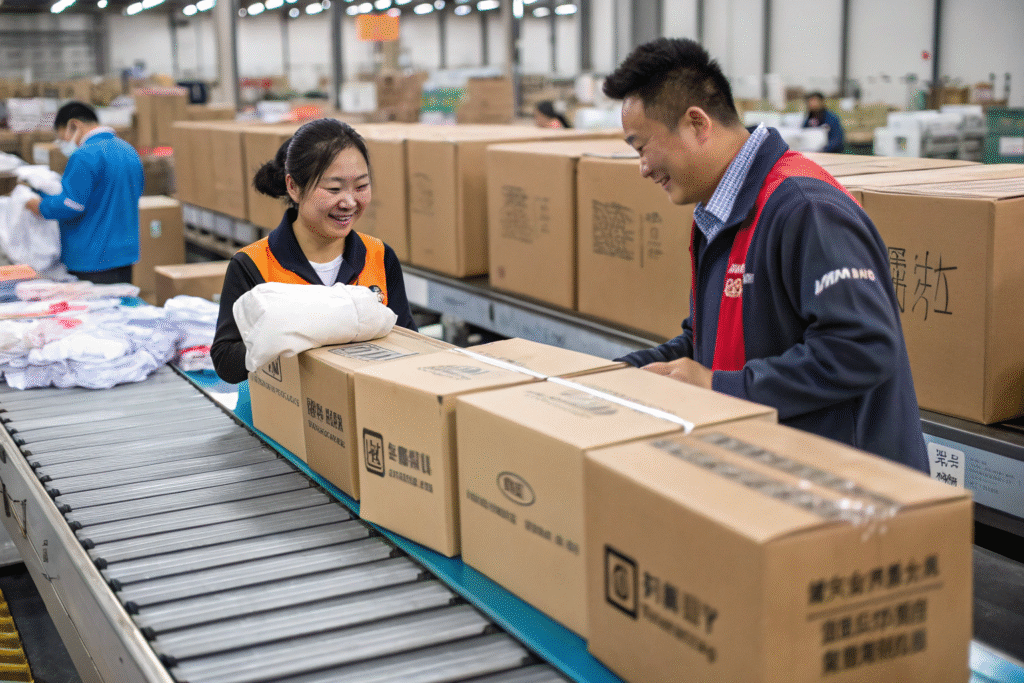
How do reliable suppliers ensure quality?
We conduct inline QC at three stages: post-cutting, during stitching, and final packing. Any garment failing shrinkage, seam strength, or colorfastness is removed. This ensures every exported piece meets US standards like those in ASTM F1816-97 and European EN 14682.
Buyers should insist on detailed QC photos and videos. We offer real-time updates through platforms like Trello or WhatsApp for seamless communication.
What delivery terms work best for organic babywear?
For sensitive and seasonal goods, we recommend DDP shipping for smoother customs clearance and reduced buyer stress. Our clients also benefit from multi-warehouse consolidation for combined kidswear shipments.
We also support smaller MOQ (Minimum Order Quantity) batches for trial launches. If your brand sells through Shopify or Amazon, faster sample iteration and firm ETDs (Estimated Time of Delivery) are key.
Conclusion
Whether you’re a large retailer or an up-and-coming brand, offering the best organic newborn clothing starts with choosing the right materials, styles, and manufacturers. GOTS-certified cotton, bamboo blends, and certified production processes give your brand a competitive edge in the eco-conscious babywear market. By focusing on real documentation, safe dyes, trending minimal designs, and responsive suppliers, you build not only trust but also long-term margin. As someone who’s helped dozens of U.S. brands grow their babywear lines from the ground up—I can say this with certainty: organic isn’t just a buzzword. It’s a buying standard.

